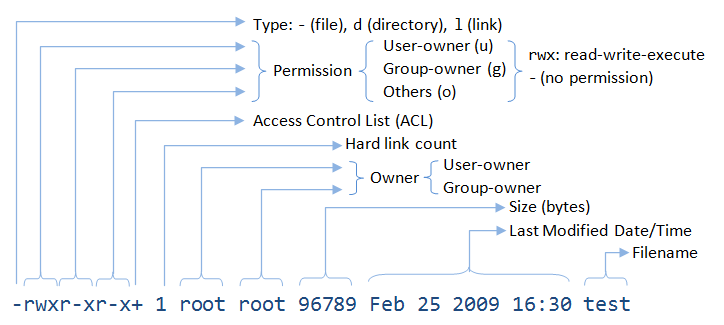File and Directory Permissions
Recall that:
- Like most modern systems,
Linux arranges its file system in a hierarchical structure of
files and directories.
Directories may contain entries for files and other directories.
- File entries contain the file's name,
together with a pointer to a structure termed the inode
(the information node?),
which represents the details of the file.
These are the familiar items shown by the standard ls -l command:
drwxr-xr-x 11 chris staff 1024 Jul 29 20:29 WWW
-rw------- 1 chris chris 53436 Aug 1 16:28 autonomous.pdf
-rw-r--r-- 1 chris chris 88 Dec 20 2016 scrolldown.gif
|
Multiple file entries, from possibly different directories, may point to
the same inode. Thus, it is possible to have a single file with multiple
names - we say that the names are links to the same file.
One unsigned 32-bit integer field in each inode contains the file's
permission (or protection) mode bits -
see /usr/include/bits/typesizes.h
 From history,
the permission mode bits appear in the same integer defining
the file's type (regular, directory, block device, socket, ...) -
From history,
the permission mode bits appear in the same integer defining
the file's type (regular, directory, block device, socket, ...) -
See man 2 stat for details.
CITS2002 Systems Programming, Lecture 16, p8, 19th September 2023.
|


 CITS2002
CITS2002 CITS2002 schedule
CITS2002 schedule From history,
the permission mode bits appear in the same integer defining
the file's type (regular, directory, block device, socket, ...) -
From history,
the permission mode bits appear in the same integer defining
the file's type (regular, directory, block device, socket, ...) -